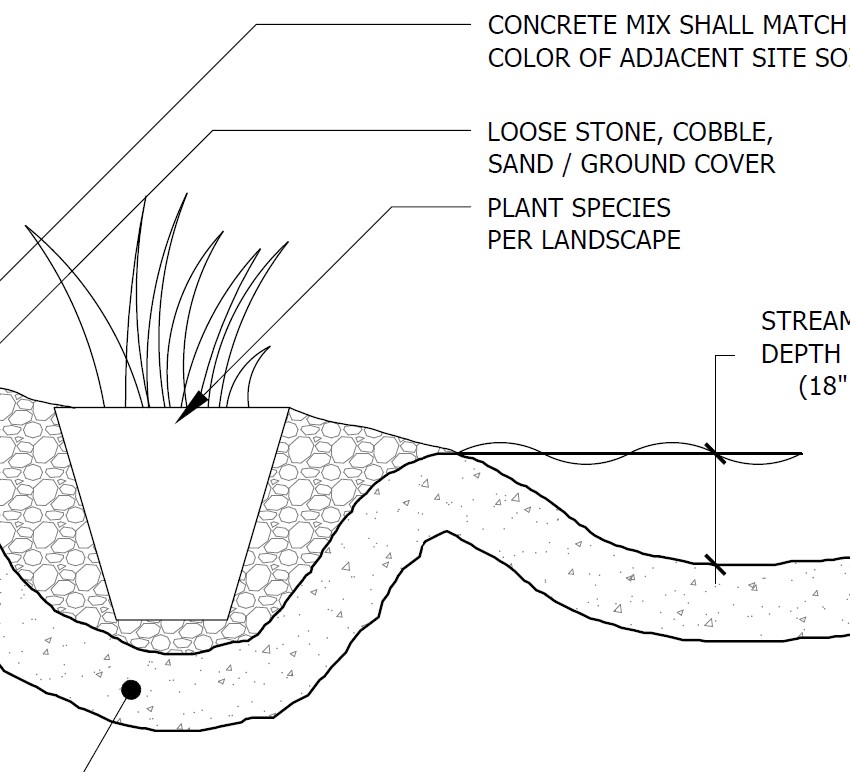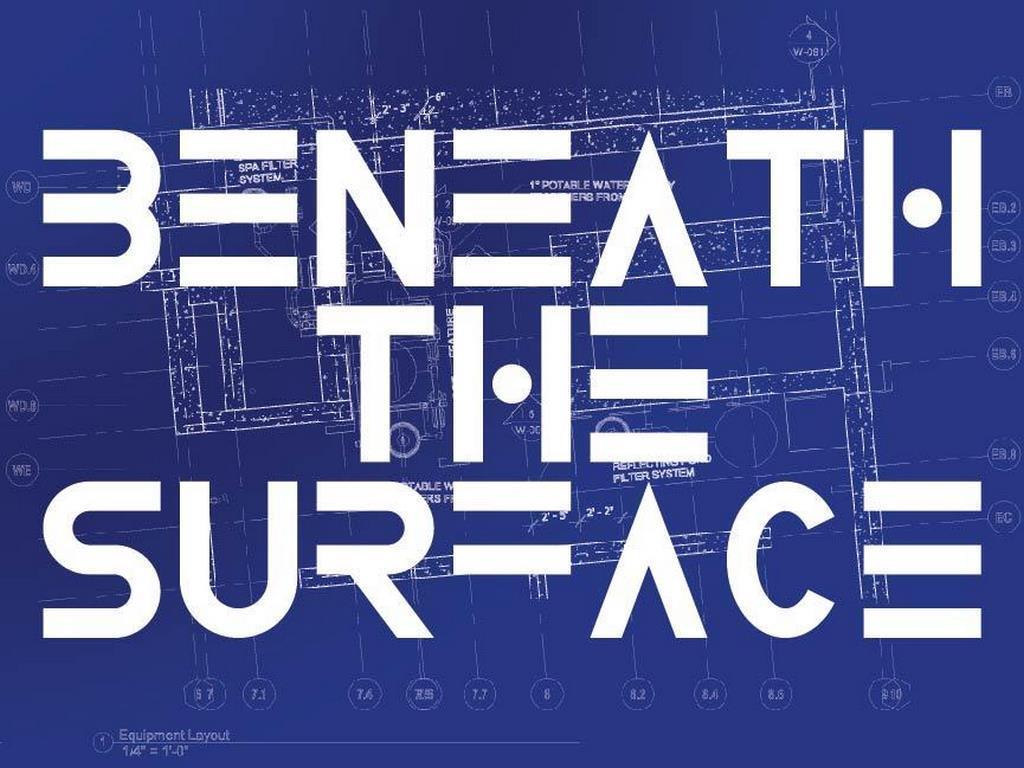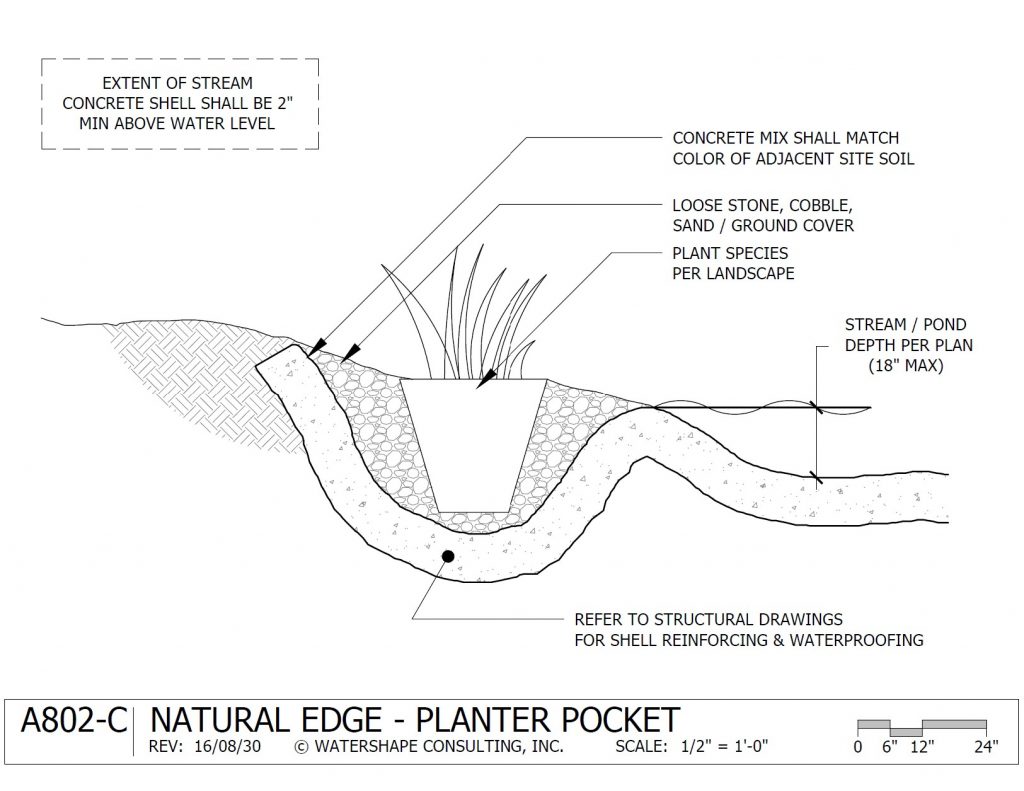A802-C: Natural Edge Planter Pocket


Combining plants and water is one of the key elements in creating watershapes that look natural. How to handle those key transitions where water, plants and earth come together can be tricky, especially if you don’t plan ahead for the presence of planting pockets. This simple detail offers a clean and easy way to manage those visual and functional transitions.
By Dave Peterson & Richard Kremer
How you treat edges is crucial in all types of watershapes. In bodies of water designed to directly mimic nature, those transitions often involve plants. Clients and their landscape architects, who are including naturalistic watershapes in their designs, often want to create a seamless transition between water, edge plantings, and the surrounding terrestrial surface.
We’ve seen situations where the builder stops the concrete at the edge of the stream and doesn’t allow water to percolate into the planting areas. We’ve also seen pockets that are far too small and shallow to work effectively with most types of plants.
This is an intimate and simple detail that enables plant placement that creates natural-looking edges. It enables the watershaper to make those appealing visuals transitions between the water’s surface and the surrounding landscape.
On the front edge by the main body (pond or stream) the water flows very naturally over the edge. The planting pocket becomes part of the concrete structure. It enables you to install decorative cobble and larger rock material on the surface surrounding the plant itself. We recommend using a concrete mix designed to match the color of the surrounding soil.

TOGETHER BUT SEPARATE
While this detail enables the watershaper to visually blend the planted area, it also has the advantage of keeping the soil for the plants separated from the main body of water, which supports water clarity and biological filtration. No one likes to look at cloudy or even muddy water.
Here, water is allowed to ease its way over the front edge of the pocket, while the landside of the pocket is raised above the water line by a few inches to create a physical water stop where the actual dry area begins. In effect, the back side of the pocket becomes the functional edge of the watershape in those locations.
The dimensions of the pocket are determined by the needs of the plants’ containers. Even though it’s an extremely simple detail, it helps to know the types of plants being used prior to construction so you can be sure to create enough space for a given plant type. Without that type of forethought, it’s common to see builders create small and shallow 12-inch-deep pockets, a depth in which very few plant species will survive.
We use a similar but expanded version of this detail on natural swimming pools where the presence of plantings is even more substantial. Depending on the situation, these pockets can be expanded to several feet — again, depending on the plantings.
Note: this detail does not picture gravity drainage we often include at the bottom of the pocket.
David J. Peterson, P.E, IWI, is co-founder of Watershape University and president of Watershape Consulting, Inc. Richard C. Kremer is a project manager for Watershape Consulting.









